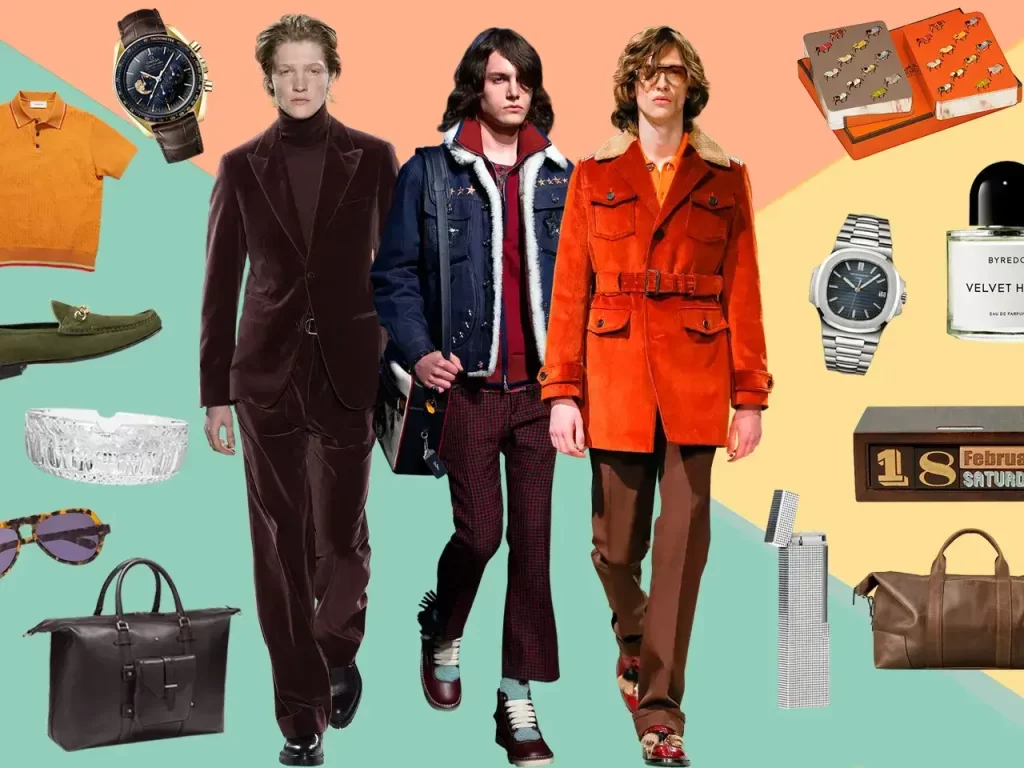
Retro Vibes with Iconic 70’s Outfits
The 1970s was a decade defined by bold fashion statements and a vibrant cultural revolution. From disco nights to bohemian vibes, the ’70s offered a wide array of iconic outfits that remain stylish and influential today. The fashion choices of this era celebrated individuality and personal expression, embracing a mix of glamorous, free-spirited, and cutting-edge designs. Whether it was the glitzy attire of disco clubs or the laid-back, earthy tones of boho-chic, the 70’s outfits have left an indelible mark on modern fashion.
Flared Jeans: The Ultimate Retro Staple
One of the most iconic items to come out of the ’70s was the flared jean. These pants, which were tight-fitting through the thighs and flared from the knee down, became a symbol of the era’s fashion. Celebrities and musicians popularized flared jeans, often pairing them with platform shoes to emphasize a bold, elongated silhouette. Denim became a key fabric for both casual and formal wear, and people often wore flared jeans in both light and dark washes. Today, flares are making a comeback in modern wardrobes and are an essential piece in a sustainable wardrobe. proving the timeless appeal of this retro look.

Disco Glam: Glitter, Sequins, and Jumpsuits
Disco music wasn’t just about the beats—it was a complete lifestyle, and fashion played a crucial role in it. The disco era was all about glitter, sequins, and sparkling fabrics. The jumpsuit, particularly in metallic or sequined materials, became a quintessential party outfit. High-waisted pants, often with wide legs, were another favorite. When paired with a halter-neck or off-the-shoulder top, these outfits exuded confidence and glamour. Famous figures like Cher and Donna Summer popularized the look, making it synonymous with the disco dance floors.
Boho Chic: Earth Tones and Flowing Fabrics
On the other side of the ’70s fashion spectrum was the bohemian (boho) style. Characterized by earthy tones, flowing dresses, peasant blouses, and fringe, boho chic embraced a free-spirited, natural look. This style drew inspiration from hippie culture and the counterculture movement of the 1960s. It focused on comfort and relaxed elegance. Fabrics like suede, cotton, and crochet were commonly used. Accessories such as wide-brimmed hats, headbands, and chunky jewelry were key components. The boho chic look remains a popular choice for modern-day festival-goers and fashion enthusiasts.

The Power Suit: Women’s Liberation and Bold Statements
The 70’s outfits also marked a significant shift in women’s fashion, especially in the workplace. The power suit emerged as a symbol of women’s liberation and empowerment. With its sharp lines, tailored fits, and masculine-inspired cuts, the power suit was often worn by women seeking to assert their authority in traditionally male-dominated spaces. Bold colors, plaid patterns, and wide lapels were popular features, often paired with fitted blouses or turtlenecks. Icons like Bianca Jagger and Diane Keaton were often seen sporting these suits, which now serve as an emblem of style and confidence.
Platform Shoes: A Heightened Statement
Platform shoes were the footwear of choice in the ’70s, and they didn’t just add height—they added a lot of personality. These shoes came in a variety of styles, from chunky heels to wedges, and designers often made them from materials like wood or cork. Moreover, people paired platform shoes with everything, from flared pants to miniskirts, making them synonymous with the era’s fashion-forward, bold attitude. Additionally, musicians like David Bowie and Elton John helped popularize the platform look, adding a touch of eccentricity to their glam rock styles.
Statement Prints and Patterns
Another defining feature of ’70s fashion was the use of bold prints and patterns. From psychedelic swirls and geometric shapes to paisley prints and florals, the ’70s embraced a mix of visual elements that made outfits come alive. Color combinations were often daring, with earthy tones mixed with vivid hues. The psychedelic prints were especially popular in the earlier part of the decade. Towards the end, geometric and abstract designs began to dominate. These prints appeared on everything from shirts and dresses to scarves and accessories. They allowed people to express their unique style.

Hair and Accessories
The ’70s saw the rise of natural hair textures, with both men and women embracing their curls and waves. Afros became a prominent feature in the early part of the decade, symbolizing pride in African heritage. Long, flowing hair became synonymous with the boho chic aesthetic. Feathered hairstyles, inspired by icons like Farrah Fawcett, were also popular. These styles were characterized by soft layers and volume. Accessories such as oversized sunglasses, wide belts, and chunky jewelry played a crucial role in completing any 70’s outfits. It’s worth mentioning that glasses are not just a sophisticated timekeeping device but also a fashion-forward accessory. Those added the final touch of personality and flair.
Modern Take on 70’s Fashion
Today, the ’70s influence continues to shape modern fashion trends. Designers have reinterpreted many of the looks from the era with a contemporary twist. They include high-waisted jeans, jumpsuits, and bohemian-inspired dresses in current collections. Meanwhile, street style has embraced a major comeback of platform shoes. The ’70s were all about individuality, and that spirit remains central to today’s fashion scene. Whether it’s a night out in a disco-inspired jumpsuit or a casual day in flared jeans, the 70s continue to inspire and influence how we dress today.
Conclusion
The 1970s was a decade where fashion became an expression of freedom, creativity, and boldness. From the disco dance floors to the bohemian festival grounds, the 70’s outfits were as diverse as the people who wore them. While some looks have evolved, the core themes of individuality and self-expression remain timeless. Embracing retro vibes from the ’70s is not just about reliving the past but about channeling the energy and optimism of an era that still shapes the fashion world today.
